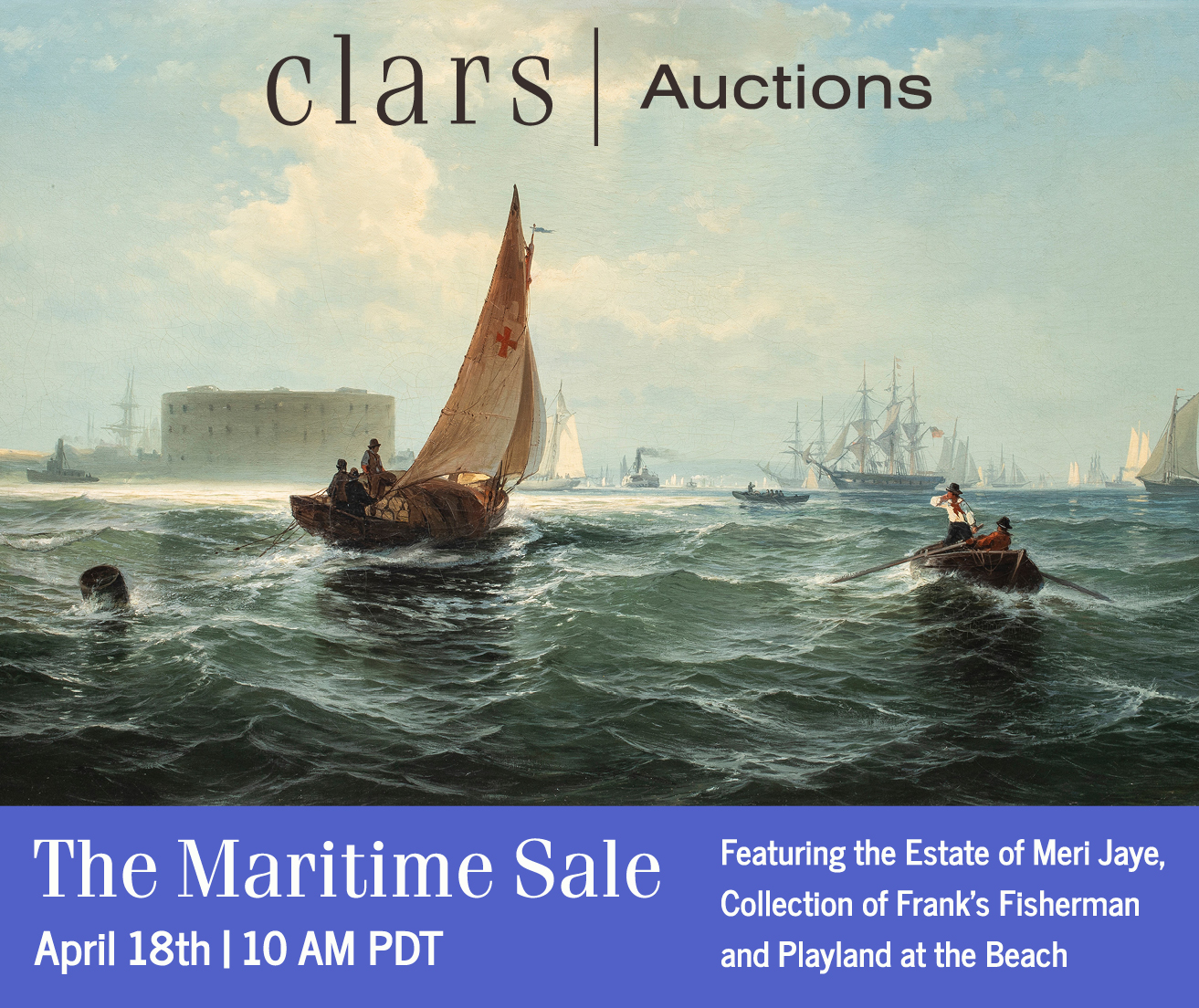Connecticut Spring Antiques Show in the Armory a Hit with Exhibitors and Visitors
March 16th, 2013
|
No, it’s not an Oreo cookie! This 2 5/8" diameter carved walnut butter print, or stamp, came from the collection of Frederick S. Weiser, a Lutheran pastor and authority on Pennsylvania German culture and artifacts who died in 2009. The print is sitting on page 123 of Weiser’s Butter Prints and Molds (Schiffer, 1986). Pook & Pook sold some of his collection at its January 12, 2013, auction, including this butter print. John H. Rogers of Elkins, New Hampshire, offered it at $2500, along with an impressive amount of other butter-making pieces.
Port ‘N Starboard Antiques, Falmouth, Maine, asked $4500 for the marine diorama with three-masted ship. The frame is carved, burned, and painted, and the marine flags spell out the legend “Joshua E. Bikks ’04 Baltimore,” who created the 27" x 32½" frame and contents.
The circa 1700 desk on frame from South Carolina is 34½" tall x 42" wide and shows a Swedish influence. Mark and Marjorie Allen of Gilford, New Hampshire, said it has its original hardware and remnants of mustard yellow paint. The asking price was $9500.
Sheridan Loyd American Antiques, St. Joseph, Missouri, brought the 40" x 60" painting, executed in the 1880’s and now laid down on masonite after undergoing restoration in the 1920’s. It was priced at $4895.
The 24" x 18" English beadwork mirror, circa 1670, features allegorical figures of Wisdom, Hope, Plenty, and Peace in the four corners. Grace and Elliott Snyder of South Egremont, Massachusetts, wanted $65,000 for the rarity.
There are four of the mustard yellow paint-decorated Windsor chairs, with paint in very good condition, for $5850 from Robert Walin and Tucker Frey of Woodbury, Connecticut. The country Rhode Island highboy, 1750-70, was $7900. |
Hartford, Connecticut
The Connecticut Spring Antiques Show was back where it belonged on March 16 and 17, back in the Connecticut State Armory and Arsenal at the corner of Broad Street and Capitol Avenue in central Hartford.
The Classical Revival armory is the largest such facility in Connecticut. The granite and limestone edifice, erected in 1909, is next door to a parking garage for the legislature (when in session) and just a short walk from the Capitol. It was home for the show for 19 years, but the events of September 11, 2001, ended that run. From 2002 until last year, the location was in flux, and the show once even moved over the state border to set up in Springfield, Massachusetts.
Show manager Karen DiSaia said, “People were happy to be back in that building—the wood floors and all the light. When you think of some of the black caves we’ve been in the last few years, it was really lovely.
“Attendance was good. A lot of people who hadn’t been there in years came,” she continued. “The Sunday attendance was stronger than normal, and it was busy all afternoon. There was a road race on Capitol Avenue on Sunday, but the Hartford police worked with us to get people to the parking garage in spite of it.”
The Connecticut Spring Antiques Show is sponsored by the Haddam Historical Society, and its involvement really is phenomenal. On Friday, while most dealers were setting up or fine-tuning their displays, there was highway construction going on directly behind the armory, with limited parking around the building. Show committee members arranged for parking in a nearby lot and drove shuttle cars back and forth for the exhibitors and members of the press, even arranging for a lead car to guide those unfamiliar with Friday afternoon traffic in Hartford to the lot and then ferrying them back.
As for the road race on Sunday, DiSaia said, “The show committee helped us with that. They found out just last week about the race and made phone calls to the movers and shakers in Hartford, who in turn called others, and we had access to the parking garage.
“When we tell the committee members there is something we need, they make it happen.”
If the ancillary stuff went smoothly, how did the actual business of selling antiques go? “A lot of dealers seemed to sell furniture,” DiSaia said. “I saw the Snyders had a chest with a tag on it; the Olsons sold quite a bit; and Hilary Nolan’s booth looked empty on Sunday, so I have to think he sold a lot of pieces.”
We asked Lorraine German of Mad River Antiques, North Granby, Connecticut, how her experience in the new-old armory went. German replied, “We sold only one piece of furniture, but an awful lot of other stuff—stoneware, scrimshawed items, and a lot more out of our display cases. It was our best spring Hartford ever.” Lorraine and Steve German have been exhibitors at the Hartford spring show since 2005, she said.
“I have to say we are very grateful to the people involved in getting us back in the armory,” Lorraine said. “It really is the grande dame of show locations and has a wonderful cachet to it, what with the skylights and wooden floor. People told us how glad they were to have us back. ‘It belongs in the armory,’ one person told us.”
DiSaia tried to come up with a list of pleased exhibitors. “There’s John Rogers; he sold a big harvest table and other things. Donna Kmetz said she had a good show, and Bob Haneberg had a good show. Truthfully, I don’t know of very many people who weren’t happy on the way out.”
DiSaia exhibits with her husband, Ralph, as Oriental Rugs Ltd. (Old Lyme, Connecticut), but both are often out of the booth taking care of the needs of others. We asked her how the rug business did. “We had interest in our rugs. It doesn’t usually happen right at the show because we’re not in the booth all the time,” she replied. “We sold four rugs while we were there and have interest in a piece that is quite a bit more expensive.”
We spoke with exhibitors on Friday, while they were setting up, and on Saturday during the show.
Bill Kelly of Limington, Maine, reported good sales during setup, and then during the first couple of hours of the show he sold a 19th-century portrait of a young woman and a brass and iron fireplace fender. Sam Forsythe of Columbus, Ohio, sold a seven-drawer tall chest and a vinegar-grained dome-top box in a nice blue-green color.
Daniel and Karen Olson of Newburgh, New York, sold a fancy 1830-50 rush-seat Boston chair, marked W.M. White (possibly an owner’s brand). Mark and Marjorie Allen of Gilford, New Hampshire, sold a late 17th-century English one-drawer paneled lift-top chest with split spindle decoration. Saltbox Antiques, Sugarloaf, Pennsylvania, sold a bench-form hutch table and several small accessories.
Hilary and Paulette Nolan of Falmouth, Massachusetts, had a very good show. “It started up with the best setup I’ve had in years,” Hilary said. “Then the amount of business after it opened was also very strong. We sold the tall cupboard to an old customer from Virginia who had been looking for something of that height.
“Gosh, I have to stop and think of what we sold,” he continued. “I know we sold a pair of candelabra, a one-drawer stand, and some other things. Seeing the old customers was great, though. One told me it was the first time back to the show since it stopped being in the armory.”
If there is one sore point in the routine of being a show dealer, it probably comes with the physical work required in breaking down one’s exhibit, getting it to the transporting vehicle, and getting that vehicle onto the pavement.
Karen DiSaia addressed that issue in the week following the closing. “People were worried that packing out was going to be difficult,” she said, “but I’m happy to report that almost everyone was out by eight o’clock, and the four or five who made it out by nine weren’t even ready by eight.
“Really, more than half the dealers were gone by six. Ralph is really good at awkward move-outs. And remember that this was for a show where people were used to not getting out till eleven or twelve at night because they didn’t know how to handle the traffic.”
For more information, contact the Haddam Historical Society at (860) 345-2400; Web site (www.ctspringantiquesshow.com).
|
The set of six tulip poplar and ash fan-back Windsor chairs, 1795-1805, each branded E. Tracy, was $32,500 from Nathan Liverant & Son, Colchester, Connecticut. |
|
|
Originally published in the June 2013 issue of Maine Antique Digest. © 2013 Maine Antique Digest










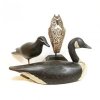







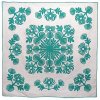


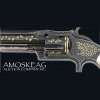








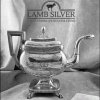
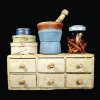
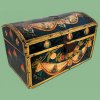

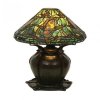
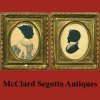









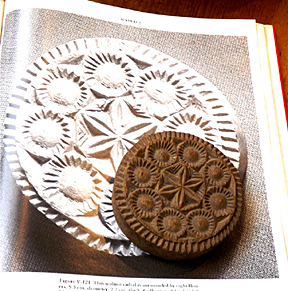
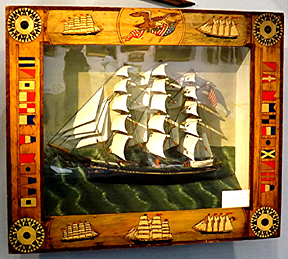
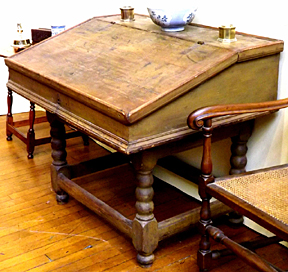
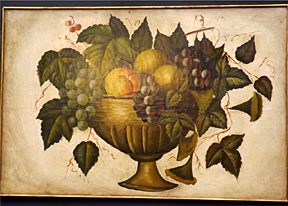
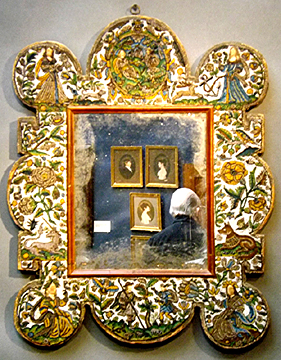
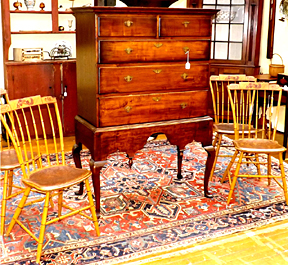
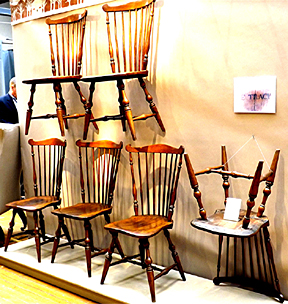
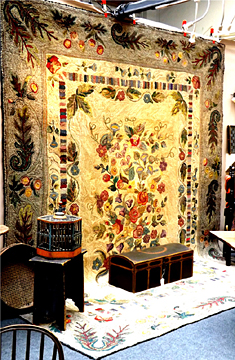 Stephen-Douglas Antiques, Rockingham, Vermont, brought a circa 1900 room-size (9' x 11') hooked rug in wonderful condition and offered it at $5500. Making a rug of this size must have been a slow labor of love.
Stephen-Douglas Antiques, Rockingham, Vermont, brought a circa 1900 room-size (9' x 11') hooked rug in wonderful condition and offered it at $5500. Making a rug of this size must have been a slow labor of love.

